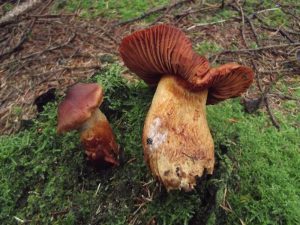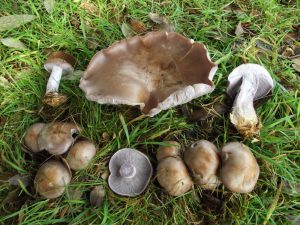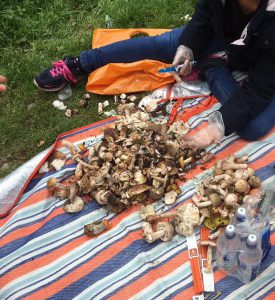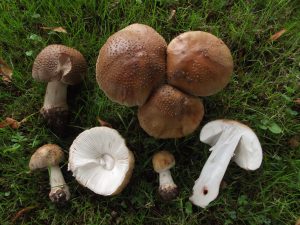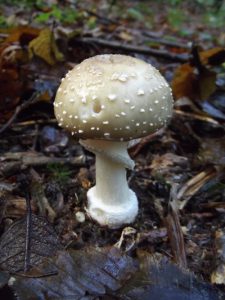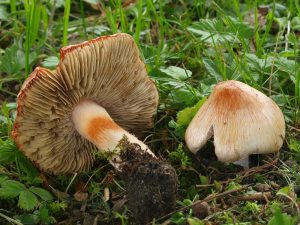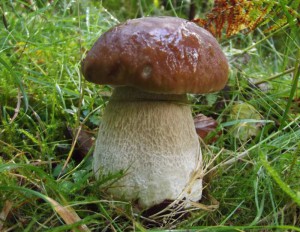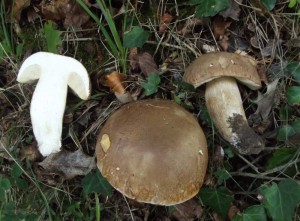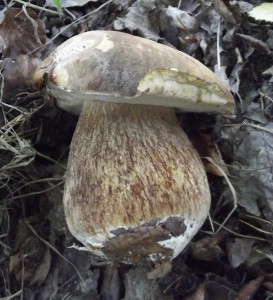Email: geoff@geoffdann.co.uk
01/09/2017
There has been a spate of poisonings and near-poisonings involving wild fungi in England this August. That they happened in August is itself unusual – in many years the toxic species involved haven’t even started fruiting by now. This year the main fungi season has started early, and some species have been fruiting very abundantly, and this includes some of the most dangerous poisonous species. Combined with the ever-increasing number of people foraging for fungi in the UK, a spate of incidents involving poisonous varieties was probably inevitable. However, these incidents expose a persistent myth – a hangover from our long-standing mycophobia. The impression given is that fungi foraging is a dangerous pastime and even “experts” can get into serious trouble. This is simply not true, as anybody who really does know what they are doing will confirm.
The first case involved some fungi picked on Dartmoor about three weeks ago. It has not, to my knowledge, been reported in the national media, but the victim’s friend’s sister notified the
foraging community via social media. She told us that the victim “knows his mushrooms”, and that he had offered his friend some too, but she had rejected them because they were too infested with insect grubs. The insect grubs wouldn’t have harmed her, but had she eaten the fungi then she might have died. The victim is currently in hospital, on dialysis, suffering from kidney failure and in need of a transplant. Within a couple of days, confirmation emerged of the species involved: the victim had mistaken a Deadly Webcap (Cortinarius rubellus) for a Wood Blewit (Lepista nuda). The discussion on social media immediately turned to how this could possibly have happened. How could somebody who “knows his mushrooms” have made this particular mistake? The answer is that this is simply not possible. Blewits are blueish-purple-grey, and while there are plenty of Webcaps which are a similar colour, one or two of which are indeed easily mistaken for Blewits, Deadly Webcaps are red-orange. The two fungi also have very different gills and grow at different times of the year – you wouldn’t expect to find a Wood Blewit in England before October, even in a year where everything is early. This is precisely the sort of mistake a novice would make, not an experienced shroomer.
The second case involved absolute beginners: two Thai ladies who had never been mushroom foraging before. They had encountered a local forager who’d been picking Blushers (Amanita rubescens), and they decided to pick some for themselves. What they didn’t know was that beginners and Blushers don’t mix well, because it is far too easy to mistake a Panthercap (Amanita pantherina) for a Blusher, and Panthercaps are dangerously poisonous. These two ladies were lucky enough to run into some people from Glamorgan Fungi Group, who, having noticed their bucket full of Blushers, asked them what they were doing. They offered to go through the collection, and check to see whether any Panthercaps had crept in by mistake. No Panthercaps turned up, but something far worse did. In amongst the Blushers were some Deathcaps. More than enough to kill not only these two Thai ladies, but most of their families as well, had they got home and made the wild mushroom soup they had planned. No experienced forager would have made this mistake either. (And I’m not even going to start on the state of this pile of mushrooms, ruined by dirt even without the lurking Deathcaps – what a pointless waste).
A third case emerged yesterday, reported in a local newspaper in Essex. Details are scarce, but what we do know is that an “experienced mushroom picker” who lives in Southend has eaten a Deathcap and has been “hospitalised for several days with severe illness”. It might be true that this was an experienced forager, but I simply don’t believe it. These stories get reported like this, both by the traditional media and on social media, by people who do not understand the risks associated with fungi foraging. Yes, it can be dangerous, but only if you are over-confident, foolish or complacent. “Experienced foragers” do not make these sorts of mistakes – only people who themselves do not know much about fungi make the claim that “even experienced foragers can easily make fatal mistakes”, and this includes both journalists and friends of victims.
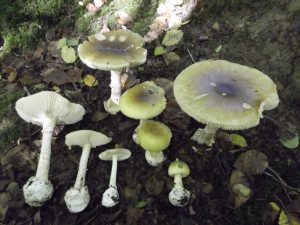
Deathcap (Amanita phalloides), deadly but does not really look like either The Blusher or a Panthercap, regardless of being related.
Foraging for fungi is perfectly safe provided you take the time to educate yourself about the risks. The two species of fungi involved in these incidents are very well known, and have been responsible for countless previous poisonings worldwide. For any particular edible species, we know what you are likely to confuse them with, and how to tell them apart. The people who end up poisoning themselves (and their friends and families) are nearly always either beginners who didn’t understand the risks, people who are foraging in foreign lands with unfamiliar fungi, or people who made a very stupid mistake that could easily have been avoided. The truth is that people who do take their time, make a bit of effort to learn about fungi and then take a reasonable amount of care, do not end up eating any poisonous wild fungi.
If you want to learn more about safely foraging for fungi then there’s two things you need to two. The first is to buy a good book (mine came out last year, and is the most comprehensive and up-to-date book on fungi foraging in northern Europe). For details see the link at the top of this page, or reviews on Amazon . The second is to go on a forage (for food) or a foray (just about mushrooms) with somebody who really does know what they are doing, because this greatly accelerates the rate at which you can learn.
Below are some photos of the fungi involved in the recent incidents, and some other of the “usual suspects” and I’ll leave you with one other comment posted on social media a couple of days ago:
“Has anyone ever eaten a poisonous mushroom? I know they all have varying effects but is the worse that can happen sickness and or diarrhoea? I’m more up for trying mushrooms but my other half is really adamant unless we can know 100% what it is which I find hard as a lot have poisonous look alikes”.
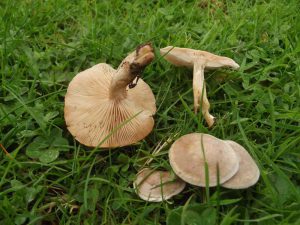
Fool’s Funnel (Clitocybe rivulosa), another well-known seriously toxic species, though rarely deadly.
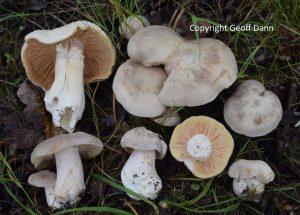
Livid Pinkgill (Entoloma sinuatum), just about as dangerous as a mushroom gets without actually being deadly.

